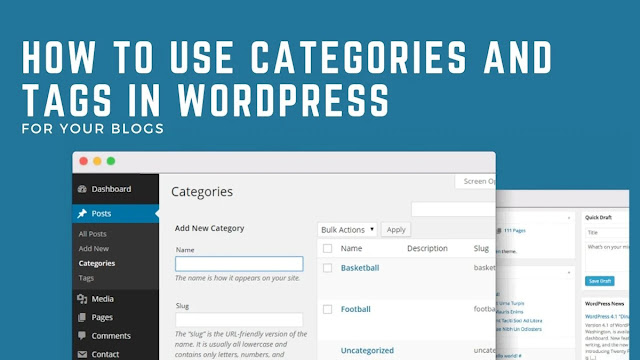Articles are one of
the richest sources of information, no matter if it is published on the web or
magazine. Visitors often come to websites in a hurry to grab the desired
information. So, it’s imperative for you to have all the posts on your website
in a neat, clean, and organized manner. Maybe they have come to your site just
to read one blog but now they want more of it. In that scenario, your content
pieces should be readily available for their consumption else they will hit the
back button.
The whole point of
discussing all these things is making you aware of how you can arrange all your
blog posts. First of all, being a WordPress user itself brings you a lot of
advantages, and blog organization is not a big deal. This hugely popular
platform has a built-in taxonomy system to let you group blogs in an easy way.
This consists of categories and tags that you can assign to each written
product according to the topic they cover. But before you go any further, you
need to first determine your blog niche and make sure it falls under the
interest area of your audience. Because the posts that don’t get enough
engagement or comments aren’t going to benefit you anyway, and more importantly
it is not worth the time and effort you put.
In this blog post,
we’ll gain a deeper insight into how to use WordPress categories and tags for
your blog niche. But before you perceive that, I would like you to give a look
to an award-winning
web design company in Los Angeles -
SFWP Experts. Actually, the reason you need to get familiar with this
agency is that you can get in touch with them for availing a wide variety of
services for your website enhancement or its promotion. That’s not the whole,
you can also choose them as your trusted project partner if you have SEO or
online marketing in mind.
With that at the end,
let’s have a brief discussion on how to rearrange your blogs using WordPress
categories and tags.
First, take a look at
what WordPress categories and tags actually are:
What Are WordPress Categories And Tags?
As said earlier,
categories and tags are like features of WordPress that allows you to
categorize the content on your site based on the topics they are written on.
For instance, you can
see the taxonomies for blogs shown below:
- Reviews - In this category you can add all articles focused on reviews for
themes, plugins, and other software in WordPress.
- Plugins - Here you can store all the blog posts covering WordPress plugins.
- Themes - This should have all the written materials about WordPress themes.
The two main
advantages of using taxonomies for your blog arrangement are that it
facilitates the process for your visitors to find the content they are looking
for and helps your content marketing strategy to be more effective. However, to
ensure success for your content marketing strategy you must find your blog
niche and stick to it instead of covering a broad topic.
Now what I mean by
this is you should focus on a specific topic rather than covering a huge one.
Just take an example of “Sports”, it is a vast topic and could be a big pain
covering it nicely. Instead, you can pick a particular game from that and write
on it frequently. This will not just reduce your competitors but also improve
your chances to excel at that play.
Contact Details:
213-277-9177
Visit Reference Profile Websites:

No comments:
Post a Comment